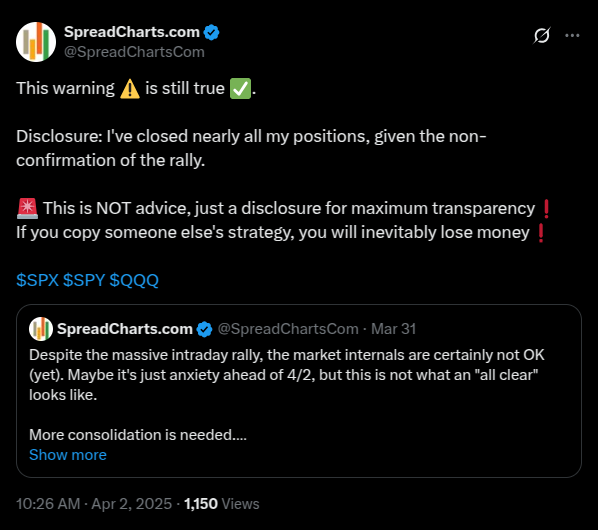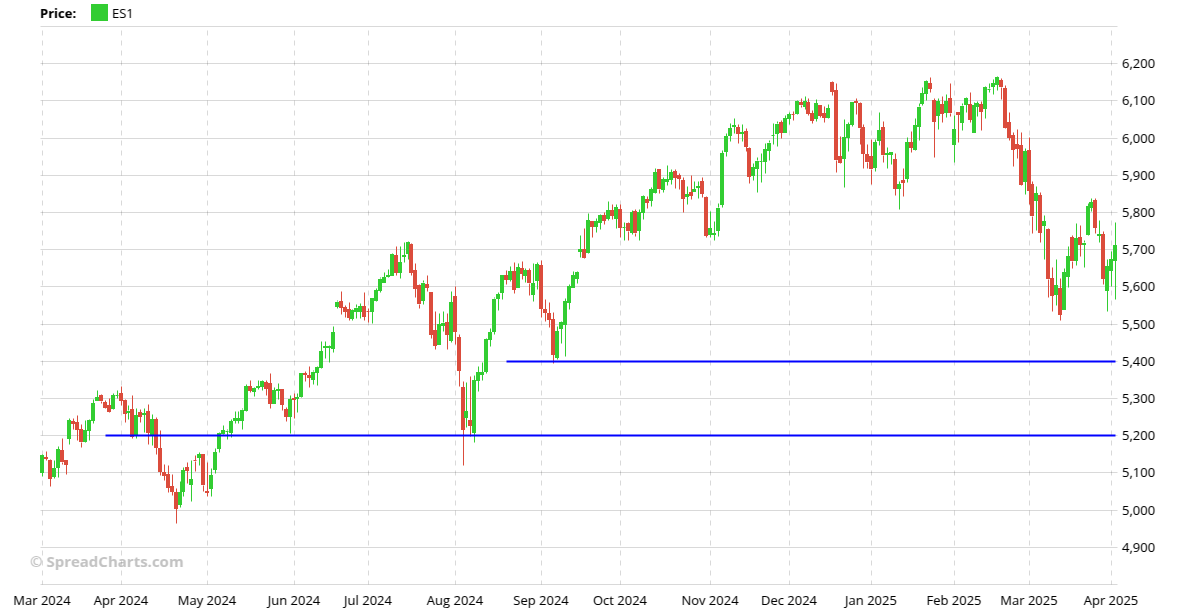Liberation Day!
Tariffs are arguably the dumbest part of Trump’s agenda. Yes, the goal makes perfect sense, but the tools he selected do not. The best way to kickstart US manufacturing is probably with targeted investments and subsidies. It’s not about burning the system down but exploiting it strategically — take a clue from the Chinese.
There is no doubt that yesterday’s announcement was a disaster. The reciprocal tariffs went far beyond what the global economy can handle without causing a recession. The real question is whether Trump intends to use this as a negotiation tactic or if he really means it. Historically, he’s always moved two steps forward and one step back — exaggerating first to push the other side into a deal that brings temporary relief, disguising the fact that the new equilibrium is materially worse than before.
This hope of a quick deal is the only reason markets are holding up so well. The selloff has been quite orderly so far. How to spot when shit really hits the fan?
In my opinion, it will become obvious when a liquidity crisis triggers forced liquidations. You’ll recognize this easily when the Dollar starts spiking while equities continue to decline. I explained this scenario in a recent article.
But what about the good news?
Everyone is focusing on how stupidly the tariffs are structured. Instead of logical calculations, the Trump administration set tariffs based on each nation’s trade deficit divided by that nation’s exports to the US. Instead of complaining about how unfair this is, people should realize this makes it easier to resolve. There’s no need for new legislation or drawn-out negotiations with domestic business lobbies or unions. Simply erase the trade deficit with the US by purchasing more US goods, such as weapons or energy. The tariff structure clearly shows what Trump is really after — recall his first-term deal with China. Although not feasible for all countries, this provides a clear path forward.
Despite consensus about market unpredictability due to Trump, this isn’t actually the case. The data continues to work remarkably well, which is great news. For example, we advised against panic in our Quarterly Macro Outlook last weekend, and indeed, the S&P 500 subsequently rallied by 200 points.
However, as I warned you on X, the data didn’t confirm the rally.
We hope this helped you avoid major losses. The market continues to be predictable, and that’s great.
I’m not sure what’s coming next, as I prefer to wait for data before deciding. But there seems little to slow the current selloff, with the first support at 5400 and the major one around 5200 for the S&P 500. However, this information has little value as a 5-year old with a crayon can do this.
Catching a falling knife is a bad strategy given the negative momentum. I’ll personally continue sticking to my strategy, waiting for data confirmation before going long.
Premium users will receive a special email notice if the data and my models produce such a signal.
Check out these great articles as well
New data: Sector indices
Our software is already established well beyond commodity market analysis. Stock indices, currencies, and even...
Read moreWhat’s new in the SpreadCharts app?
It’s been a few months since we launched the new version of the SpreadCharts app....
Read moreA major new version of the app is here
Today, we’re excited to show you the major new version of the SpreadCharts app that’s...
Read moreWhy is the Dollar falling when stocks are cratering?
We have received the same question from several of our subscribers over the past week....
Read more
